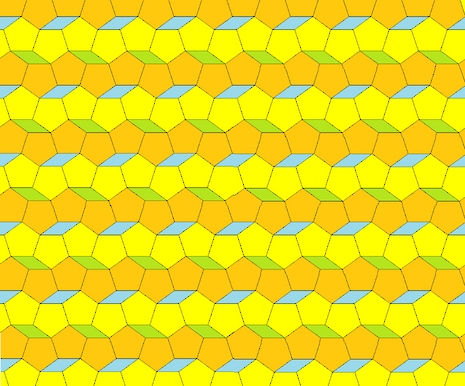Tessellations and translations
Comrie Saville-Ferguson talks to the directors of Blame Not Our Author about why a Renaissance play about shapes is strangely relevant to modern student life

Geometry. The very word still makes me shudder, evoking images of a young Comrie staring blankly at the hypotenuse, sweat mingling with tears. The idea of a 400-year-old play based around these demons of my childhood may send the average thesp screaming from the Corpus Playroom; but Blame Not Our Author looks to be not only fascinating, but funny.
‘How?’ I hear you cry. Well, the play concerns a group of anthropomorphised shapes who wish to rewrite the textbook and overthrow their own stereotypes. Still with me? ‘Quadro’ the square wishes to become the more perfect ‘circle’, which sets off a chaotic chain of events and rebellion against their leader, the compass. Clearly the play is ambitious, but the production looks poised to succeed. We recognise the ‘Prince Charming’-esque circle who is perfect (I imagine a rower) and the suave triangle, rather than rely on gimmicks such as paper mache heads. These are Cambridge stereotypes – and intensely relatable.
"We recognise the ‘Prince Charming’-esque circle who is perfect (I imagine a rower) and the suave triangle"
This is perhaps because the piece is written by students from the Jesuit English College in Rome – the four writers of the original piece jostle for command, with different styles and different jokes: a smorgasbord of visual gags, references, slapstick, wordplay, farce and downright lewdness. The writers are very aware of the disjunct between the stage and the textbook, delighting in a compass stab becoming a real life human wound, and enjoying satire of their own subject of geometry in the same way that I scrabble for humour after a particularly stinging supervision.
The directors, Ben Martineau and Fran Hughes, have moulded a tight script out of the resulting cacophony, updating it for the present. This idea of collaborating with the past is intrinsically interesting, and I am curious to see how both the humour and experiences of students has evolved over the centuries. This ‘translation’ emphasises the comedic aspects, tailoring it to the late show audience, and stripping redundant references and jokes, as well as adding in an ambitious and bold technical aspect: promise of lasers and holograms.
Although much is in blank verse and good old iambic pentameter, the style is akin to pantomime rather than to Hamlet. The passion for the text is evident from the directors, yet they are not precious about it, trimming off irrelevance, more interested in laughs and igniting interest in the original, yet carefully allowing moments of beauty to shine.
Thematically, it could not be more pertinent. The notion of a rectangle wanting to be the more perfect circle, the urge to change oneself, is a universal feeling, dissected by many a textbook – or university meme page. News of the play's revival is spreading fast amongst the circles of the contemporary Venerable English College in Rome.
But for me, this is precisely why the production is important – theatre is a vibrant living beast. Age is too often used as a synonym for redundancy or stuffiness: the original playwrights wrote to incite laughter rather than line a library. To update the play for the modern age is exciting, as we can take solace in knowing that we are united in our struggle throughout time. The return to Cambridge is a time of trepidation for all, and Blame Not Our Author could well be the perfect surreal antidote to any fears of inadequacy, coated in humour and sprinkled with impressive tech.
It is an entirely unique production in the Cambridge calendar, unlike anything you have seen and likely never to be performed again. I feel contractually obliged to say it: be there or be square.
Blame Not Our Author runs from 17th - 21st January, at the Corpus Playroom
 News / Fitz students face ‘massive invasion of privacy’ over messy rooms23 April 2024
News / Fitz students face ‘massive invasion of privacy’ over messy rooms23 April 2024 News / Cambridge University disables comments following Passover post backlash 24 April 2024
News / Cambridge University disables comments following Passover post backlash 24 April 2024 Comment / Gown vs town? Local investment plans must remember Cambridge is not just a university24 April 2024
Comment / Gown vs town? Local investment plans must remember Cambridge is not just a university24 April 2024 Interviews / Gender Agenda on building feminist solidarity in Cambridge24 April 2024
Interviews / Gender Agenda on building feminist solidarity in Cambridge24 April 2024 Comment / Does Lucy Cavendish need a billionaire bailout?22 April 2024
Comment / Does Lucy Cavendish need a billionaire bailout?22 April 2024





